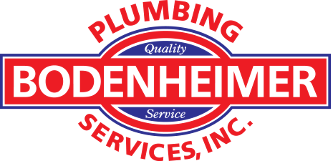The Importance of Proactive Maintenance in Commercial Buildings
When managing a commercial building, ensuring the proper functioning of all facilities is crucial for maintaining a safe, productive, and comfortable environment. Among these facilities, plumbing systems hold a particularly vital role. While they often operate out of sight and out of mind, even minor issues can escalate quickly, leading to significant disruptions and costly repairs. Proactive maintenance can save time, money, and stress, making it an integral part of managing commercial properties.
Common Plumbing Issues in Commercial Buildings
1. Leaks
Leaking faucets, pipes, and fixtures are common in commercial buildings. These issues can stem from worn-out seals, corrosion, or improper installation. Though they may seem insignificant initially, leaks can lead to:
- Increased water bills
- Structural damage to building materials, such as walls, floors, and ceilings
- Mold growth, which poses health risks and can damage property
2. Clogs
Clogs in commercial buildings can occur in toilets, sinks, and drains due to various reasons, including excessive use, inappropriate disposal of waste, and buildup of materials such as grease and hair. Clogs can result in:
- Unpleasant odors and unsanitary conditions
- Reduced efficiency of drainage systems
- Potential flooding and water damage
3. Water Pressure Problems
Inconsistent or low water pressure can be particularly problematic in commercial settings, affecting the functionality of restrooms, kitchens, and HVAC systems. Common causes include mineral buildup, leaks, and faulty pressure regulators. Consequences of water pressure problems include:
- Inadequate water supply for daily operations
- Disruption of essential services and equipment
- Increased wear and tear on plumbing fixtures and appliances
Impact on Businesses and Potential Costs
Neglecting plumbing issues in commercial buildings can lead to severe consequences, including:
- Downtime and disruptions that impact business operations
- Costly emergency repairs and replacements
- Legal liabilities from potential health hazards and code violations
- Loss of reputation and tenant dissatisfaction
Preventative Measures for Commercial Plumbing Problems
Regular Inspections and Maintenance Best Practices
Proactive maintenance starts with regular inspections and routine servicing of your plumbing systems. Here are some best practices:
- Schedule annual professional inspections to identify and address potential issues before they escalate.
- Implement a regular cleaning schedule for drains and pipes to prevent buildup and clogs.
- Ensure that all plumbing fixtures are properly installed and maintained according to manufacturer guidelines.
Employee Awareness and Best Use Practices
Educating employees and building occupants on proper plumbing use can significantly reduce the risk of issues. Consider the following steps:
- Provide clear signage and guidelines for what should and should not be disposed of in toilets and sinks.
- Encourage prompt reporting of any leaks, clogs, or water pressure problems to facility management.
- Conduct periodic training sessions for maintenance staff on identifying and addressing common plumbing issues.
The Value of Proactive Plumbing Maintenance for Commercial Buildings
Proactive plumbing maintenance is essential for the smooth operation of any commercial building. By addressing common plumbing issues such as leaks, clogs, and water pressure problems before they escalate, building managers, property owners, and maintenance teams can save time, money, and headaches.
Don’t wait for plumbing issues to disrupt your operations. Reach out to Bodenheimer Plumbing Services today to schedule regular inspections and ensure your plumbing systems are in top shape.


